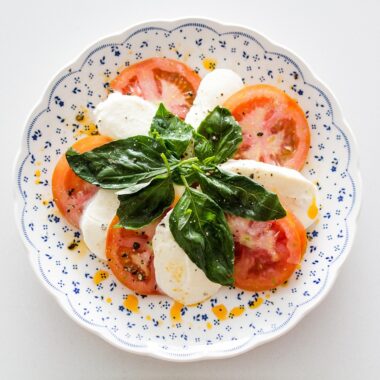Painting your kitchen ceiling may not seem as glamorous as selecting wall colors or backsplash tiles, but it’s a crucial part of creating a functional and aesthetically pleasing space.
The right paint for your kitchen ceiling needs to address specific challenges such as humidity, grease, and the potential for staining. In this article, we’ll explore the best types of paint, factors to consider, and expert recommendations to help you make an informed decision.
Why the Kitchen Ceiling Deserves Special Attention
The kitchen is a high-traffic area prone to moisture, heat, and airborne grease. These elements can accumulate on the ceiling, leading to discoloration, mold growth, and peeling paint. A good-quality paint not only enhances the appearance of your kitchen but also provides long-lasting protection against these common issues.
Key Factors to Consider
When choosing the best paint for your kitchen ceiling, keep the following factors in mind:
Durability and Resistance
Moisture Resistance: The kitchen ceiling is exposed to high levels of humidity from cooking and cleaning. A moisture-resistant paint helps prevent peeling and mold.
Stain Resistance: Cooking fumes and grease can stain ceilings. Opt for paints with stain-resistant properties to keep your ceiling looking clean.
Finish Type
The finish of the paint can significantly affect the appearance and maintenance of your kitchen ceiling.
Flat/Matte Finish: Offers a non-reflective, smooth look. It hides imperfections but is harder to clean.
Eggshell or Satin Finish: Provides a slight sheen, making it easier to wipe clean while maintaining a sophisticated appearance.
Semi-Gloss Finish: Highly durable and easy to clean, but its reflective surface can highlight imperfections.
Color
While white is the most popular choice for ceilings due to its ability to make a room appear larger and brighter, consider shades that complement your overall kitchen design.
Paint Type
Latex Paint: Water-based and ideal for kitchen ceilings because it dries quickly, has low odor, and is easy to clean.
Oil-Based Paint: Offers excellent durability and stain resistance but has a strong odor and takes longer to dry.
Acrylic Paint: A versatile option that combines the benefits of both latex and oil-based paints.
Low-VOC (Volatile Organic Compounds)
For a healthier indoor environment, choose paints labeled as low-VOC or zero-VOC, especially in a confined space like the kitchen.
Best Paints for Kitchen Ceilings: Top Recommendations
Benjamin Moore’s Waterborne Ceiling Paint
Features: Specifically formulated for ceilings, this paint offers a flat finish that hides imperfections and resists sagging.
Benefits: Excellent coverage, low VOC, and mildew-resistant properties make it ideal for kitchens.
Sherwin-Williams’ Kitchen & Bath Paint
Features: Designed for high-humidity areas, this paint resists mold and mildew.
Finish Options: Available in satin and semi-gloss finishes for easy cleaning.
Durability: Long-lasting with superior stain resistance.
BEHR Premium Plus Ultra Ceiling Paint
Features: A paint and primer in one that offers excellent stain-blocking properties.
Benefits: Durable, mildew-resistant, and low-VOC, this option provides value for money.
Zinsser Perma-White Mold & Mildew-Proof Paint
Features: Formulated to prevent mold and mildew growth, this paint is perfect for kitchens with high humidity.
Finish Options: Available in satin and semi-gloss finishes.
Versatility: Can be tinted to match your color preference.
Valspar Ultra Interior Ceiling Paint
Features: Offers a smooth, flat finish with excellent coverage.
Benefits: Its anti-spatter formula makes it easier to apply on ceilings.
Rust-Oleum’s Kitchen & Bath Paint
Features: Combines durability and ease of application.
Benefits: Resists moisture, stains, and mildew, making it suitable for kitchens.
Step-by-Step Guide to Painting Your Kitchen Ceiling
Once you’ve selected the best paint, proper preparation and technique are key to achieving a professional finish. Follow these steps for a successful project:
Step 1: Gather Materials
Paint and primer (if separate)
Paint roller with an extension pole
Angled brush for edges
Drop cloths and painter’s tape
Ladder and safety goggles
Cleaning supplies (soap, water, sponge)
Step 2: Prepare the Area
Remove all items from the kitchen or cover them with drop cloths.
Clean the ceiling to remove grease, dirt, and cobwebs. Use a mild detergent and a sponge for effective cleaning.
Repair any cracks or holes with spackle and sand them smooth.
Apply painter’s tape to protect walls, cabinets, and light fixtures.
Step 3: Apply Primer
If your paint doesn’t include primer, apply a stain-blocking primer to ensure even coverage and better adhesion.
Step 4: Paint the Ceiling
Begin painting at the edges using an angled brush.
Use a roller with an extension pole for the larger area. Work in small sections to ensure even application.
Apply a second coat if necessary, allowing the first coat to dry completely.
Step 5: Clean Up
Remove painter’s tape carefully to avoid peeling the paint.
Clean brushes and rollers with soap and water if using latex paint, or the appropriate solvent for oil-based paint.
Pro Tips for a Perfect Finish
Work in Natural Light: Paint during the day to spot imperfections easily.
Avoid Overloading the Roller: Excess paint can lead to drips and an uneven finish.
Use Long Strokes: For a smooth and consistent look, use long, even strokes with the roller.
Ventilate the Area: Ensure proper ventilation to help the paint dry faster and reduce fumes.
Common Mistakes to Avoid
Skipping Primer: This can lead to uneven coverage and poor adhesion.
Ignoring the Finish: A flat finish might not be practical for kitchens prone to grease and moisture.
Rushing the Process: Allow ample drying time between coats for the best results.
Using the Wrong Paint: Avoid paints not specifically designed for high-humidity or high-traffic areas.
Maintenance Tips for a Fresh Kitchen Ceiling
Regular Cleaning: Wipe the ceiling periodically with a damp cloth to remove grease and dust.
Check for Mold: Inspect the ceiling for signs of mold or mildew and address any issues promptly.
Touch-Up Paint: Keep a small amount of leftover paint for touch-ups in case of stains or peeling.
Conclusion
Choosing the best paint for your kitchen ceiling is about balancing durability, functionality, and aesthetics. With options like Benjamin Moore’s Waterborne Ceiling Paint or Sherwin-Williams’ Kitchen & Bath Paint, you can ensure long-lasting protection and a flawless finish. By considering factors such as moisture resistance, finish type, and ease of application, you’ll transform your kitchen ceiling into a durable and attractive feature that enhances the overall space.


















